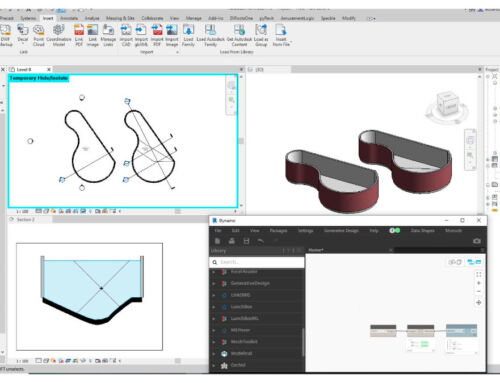Tottori is a small town and capital of the prefecture of the same name, located on the southern Japanese coast of the Sea of Japan. One of the main attractions it offers for tourism and leisure, apart from various monuments and the castle ruins, are the gigantic sand dunes that stretch out into the sea on the eastern side of the city. Well, a café that towers over the Tottori dune landscape has recently opened to the public, with a particular design by the Tokyo-based architectural firm with offices in Paris, Beijing and Shanghai, Kengo Kuma and Associates: Takahama Café.
According to the architects, the three-storey “observatory/café“, with a terrace on the top floor, was conceived as a “staircase to the sky“. If we look at the oblique profile of the building housing the café, we see that its façade actually follows the lines of the side staircase leading up to the terrace. It is almost as if the architectural firm had first designed the staircase and then added the installations, the walls and completed the building on the basis of it. In this way, the architecture of Takahama Café points to the sky and gives much of the building’s prominence to the upper terrace.

For the façade, interiors and furnishings, the architectural firm chose cross-laminated timber, which “provides a warm texture that blends in with the surrounding sand dunes”. The structure, on the other hand, was built with reinforced concrete, whilst the openings, which are generously designed to allow plenty of light and views, are enclosed with large glazing. In addition to its design as a stairway leading to the sky above the Tottori dunes, the building is a tribute to the handicraft culture, or mingei, for which the city is known, according to the architects.
The concept of mingei, translated as ‘folk crafts’, was developed by the Japanese philosopher and aesthete Yanagi Sōetsu (1889-1961) in the mid-1920s in Japan, together with a group of well-known craftsmen in various disciplines. The concept was intended to be reserved for higher forms of art, to distinguish it from ordinary craftsmanship and the manufacture of functional utensils. The Takahama Café therefore aims to, and succeeds in, distancing itself from merely practical buildings, and not only because of its bold exterior. The interior incorporates local craftsmanship, whether in the plywood chairs, the lamps made of washi paper dusted with local sand, or the beautiful combination of green and black glaze on the washbasins in the toilets by Nakai-gama, a “Tottori Mingei” pottery workshop.






Sources Kengo Kuma and Associates, Wikipedia. Images: Kengo Kuma and Associates.






